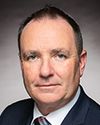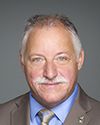I call this meeting to order.
Welcome to the fourth meeting of the Standing Committee on Veterans Affairs.
Pursuant to the motion adopted on February 8, 2022, the committee is meeting to study the desecration of monuments honouring veterans.
Today's meeting is taking place in a hybrid format pursuant to the House order of November 25, 2021. Members are attending in person in the room and remotely using the Zoom application. The proceedings will be made available via the House of Commons website. Just so that you aware, the webcast will always show the person speaking rather than the entirety of the committee.
Today's meeting is also taking place in a webinar format. Webinars are for public committee meetings and are available only to members, their staff and witnesses. Members enter immediately as active participants. All functionalities for active participants remain the same. Staff will be non-active participants and can therefore only view the meeting in gallery view.
I would like to take the opportunity to remind all participants at this meeting that screenshots or taking photos of your screen are not permitted.
When speaking, please speak slowly and clearly. When you are not speaking, your mike should be on mute.
As a final reminder, all comments by members and witnesses should be addressed through the Chair.
With respect to the list of speakers, the clerk of the committee and I will do our best to maintain the speaking order for all members, whether they're attending the meeting in person or remotely.
I will let you know, as usual, when you have about a minute left and your time is up, so that you can wrap up, please.
I'd now like to welcome our witnesses. They're with us for the duration of the meeting, until 8:30 p.m.
We have with us, from the Department of National Defence, Stephen Harris, chief historian with the directorate of history and heritage; from the Department of Public Works and Government Services, Stéphan Déry, assistant deputy minister with the real property services branch; and from the Department of Veterans Affairs, Crystal Garrett‑Baird, acting assistant deputy minister with strategic policy and commemoration.
We'll move to opening statements from the witnesses. Each group will have five minutes for their presentation, and then we'll move on to questions from members. I know that Stephen Harris, from the Department of National Defence, won't be making any opening remarks.
Without further ado, I would invite Stéphan Déry from the Department of Public Works and Government Services to make his opening remarks.
Mr. Déry, you have exactly five minutes for your presentation.
Go ahead, please.










